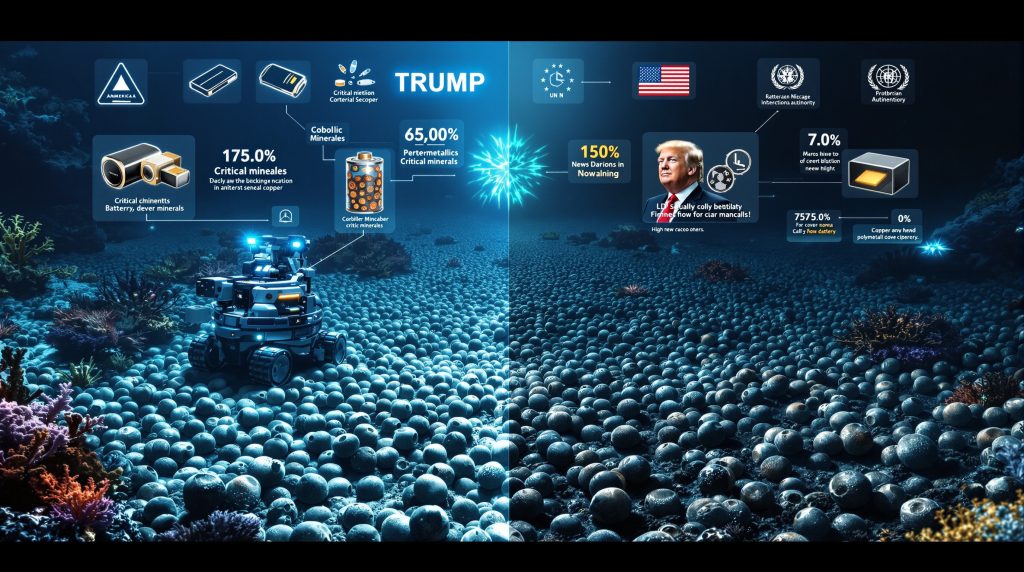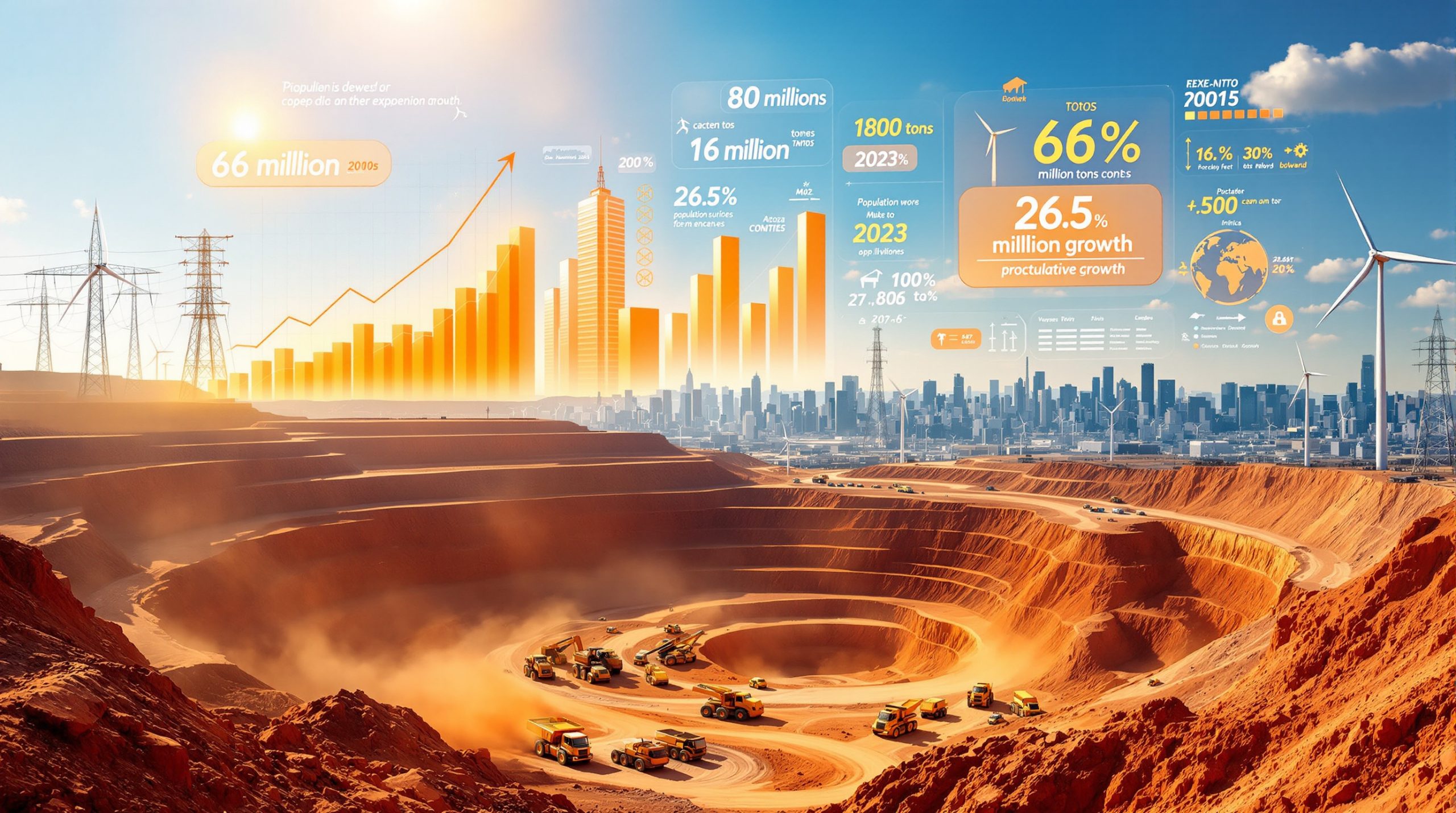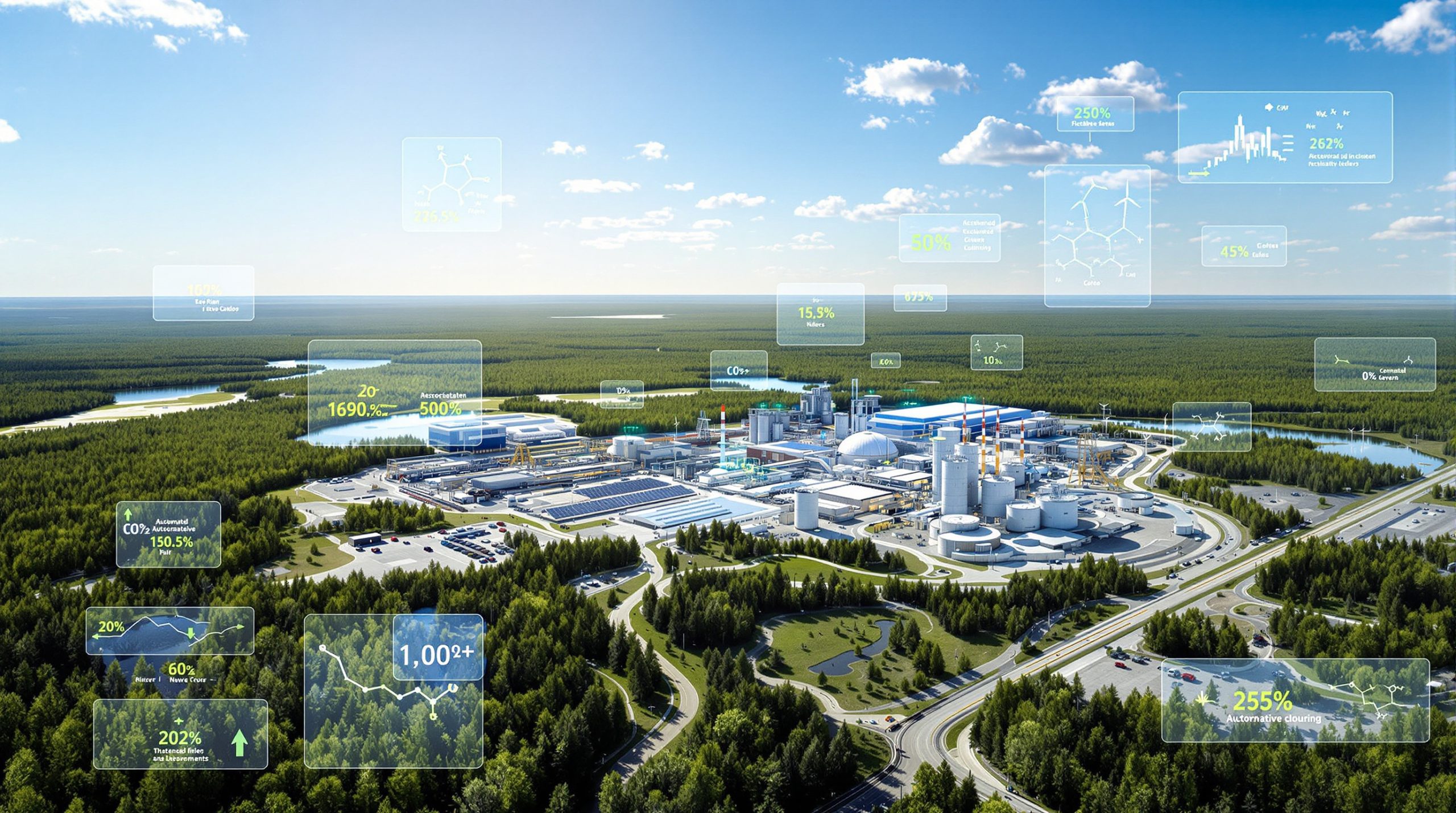The Deep-Sea Mining Debate: Understanding Trump's Executive Order and Its Global Impact
Deep-sea mining involves extracting valuable mineral deposits from the ocean floor at depths ranging from 1,000 to 6,000 meters. The primary targets are polymetallic nodules—potato-sized rocks containing manganese, nickel, cobalt, and copper that form over millions of years through the slow accumulation of minerals from seawater.
These resources have become increasingly critical for green energy technologies, including electric vehicle batteries and renewable energy infrastructure. However, the practice remains highly controversial due to potential environmental impacts on largely unexplored marine ecosystems.
Scientists estimate that more than 80% of the deep ocean remains unmapped and unexplored, making it one of Earth's last relatively pristine environments. Many marine biologists argue that we simply know too little about deep-sea ecosystems to understand the full consequences of large-scale mining operations on these delicate habitats.
How Do Polymetallic Nodules Form and What Do They Contain?
Formation Process and Composition
Polymetallic nodules develop through an extremely slow geological process, growing at rates of just a few millimeters per million years. These dark, potato-sized rocks form when minerals dissolved in seawater gradually precipitate around a core object, such as a shark's tooth or fragment of shell.
The nodules typically contain:
- Manganese (essential for steel production)
- Nickel (critical component in EV batteries)
- Cobalt (vital for high-performance battery technology)
- Copper (fundamental for electrical wiring and components)
In certain areas of the seabed, particularly in the Clarion-Clipperton Zone (CCZ) of the Pacific Ocean, these nodules appear in remarkable abundance—sometimes described as resembling "a carpet of golf balls" spread across the ocean floor. Industry estimates suggest there may be more than 20 billion tonnes of nodules in targeted Pacific regions, with a potential market value approaching $20 trillion.
Critical Minerals for Green Technology
These minerals represent crucial components for the global transition to renewable energy:
| Mineral | Primary Uses in Green Technology | Current Supply Challenges |
|---|---|---|
| Cobalt | EV batteries, energy storage systems | 70% of production from DRC, ethical mining concerns |
| Nickel | EV batteries, wind turbines | Processing dominated by China and Indonesia |
| Copper | Electric motors, transmission systems | Declining ore grades in terrestrial mines |
| Manganese | Steel for wind turbines, battery cathodes | Processing concentrated in China |
The polymetallic nodules benefits extend beyond just material value, potentially offering a more concentrated source of minerals with fewer impurities than land-based alternatives.
What Does Trump's Executive Order on Deep-Sea Mining Entail?
Key Provisions and Objectives
On April 24, 2025, President Donald Trump signed an executive order titled "Unleashing America's Offshore Critical Minerals and Resources." This directive represents a significant shift in U.S. policy toward seabed mining and includes several key provisions:
- Establishing a streamlined permitting process for deep-sea mining operations
- Directing federal agencies to "rapidly" exploit and process seabed mineral resources
- Authorizing the Department of Interior to solicit commercial lease requests for mining near American Samoa
- Instructing the National Oceanic and Atmospheric Administration (NOAA) to fast-track permits for mining in international waters
The executive order frames deep-sea mineral resources as essential to U.S. national security and economic independence, particularly highlighting concerns about China's dominance in critical mineral supply chains.
National Security Justification
The Trump administration has positioned this initiative as crucial for reducing American dependence on foreign sources of critical minerals. The executive order specifically references lessons learned during the COVID-19 pandemic about supply chain vulnerabilities and China's strategic control over critical mineral processing.
NOAA's announcement of the new permitting regime described the executive order as likely to spark "the next gold rush"—language that alarmed environmental advocates and international legal experts concerned about unregulated exploitation of ocean resources. Following Trump's critical minerals order, several mining companies have already begun preparing applications for exploration permits.
How Does The Metals Company Plan to Mine the Deep Sea?
Technology and Extraction Methods
The Metals Company (TMC), led by Australian entrepreneur Gerard Barron, has invested hundreds of millions of dollars developing specialized technology for harvesting polymetallic nodules. Their approach involves:
- Deploying remotely operated vehicles with collection systems to gather nodules from the seabed
- Using a riser and lifting system to transport the nodules to surface vessels
- Returning filtered seawater to minimize environmental disturbance
- Transporting collected nodules to land-based processing facilities
TMC has conducted multiple test operations, including trials of their nodule collector vehicles and environmental monitoring systems. The company argues that their collection method causes significantly less environmental damage than conventional terrestrial mining operations.
Exploration Contracts and Permit Applications
TMC holds exploration contracts through the International Seabed Authority (ISA) for areas in the Clarion-Clipperton Zone of the Pacific Ocean. These contracts allow for research and testing activities but not commercial extraction.
Following Trump's executive order, TMC became the first company to submit a permit application under the new U.S. regulatory framework—a move that has generated significant controversy in international forums and prompted an investigation by the ISA into whether the company breached its existing contractual obligations.
Why Do Scientists and Environmental Groups Oppose Deep-Sea Mining?
Ecological Concerns and Knowledge Gaps
Marine biologists and environmental organizations have raised numerous concerns about deep-sea mining, including:
- Destruction of habitat for unique deep-sea species, many still undiscovered
- Sediment plumes that could smother filter-feeding organisms far beyond mining sites
- Noise pollution affecting marine mammals and other species
- Potential disruption of carbon sequestration processes in deep-sea ecosystems
- Limited scientific understanding of recovery rates for disturbed areas
Oceanographer Patricia Esquete describes deep-sea science as "a field of work that is in diapers," noting that researchers lack even basic knowledge about which species inhabit these environments and what their ecological needs are.
Scientific Opposition and Precautionary Principle
Many scientists advocate applying the precautionary principle to deep-sea mining—arguing that operations should not proceed until we have sufficient understanding of potential impacts and effective mitigation strategies.
Environmental lawyers like Duncan Currie contend that seabed mining could cause serious damage to the entire planet by disrupting marine ecosystems that play crucial roles in global environmental processes and climate regulation. The ongoing deep‐sea mining controversy has led over 700 marine science experts to sign an open letter calling for a moratorium on commercial operations.
What is the International Seabed Authority and Why Does It Matter?
Structure and Mandate
The International Seabed Authority (ISA) is a United Nations-affiliated organization established in 1994 under the UN Convention on the Law of the Sea (UNCLOS). Based in Kingston, Jamaica, the ISA has jurisdiction over approximately half the world's seabed—areas beyond national territorial waters.
The ISA's primary responsibilities include:
- Developing regulations for deep-sea mining
- Issuing exploration and eventually exploitation contracts
- Ensuring environmental protection of marine ecosystems
- Managing seabed resources as the "common heritage of mankind"
Despite operating for nearly three decades, the ISA has not yet finalized comprehensive regulations for commercial mining operations—a delay that frustrates mining companies but that environmental advocates view as necessary caution given the profound ecological implications.
Legal Framework and U.S. Position
A critical aspect of this controversy stems from the United States' unique legal position. The U.S. has never ratified UNCLOS, though it observes many provisions as customary international law. This non-party status means the U.S. is not formally bound by the ISA's authority.
Instead, the U.S. relies on domestic legislation—the Deep Seabed Hard Mineral Resources Act of 1980—as its legal basis for regulating mining activities beyond its territorial waters. This creates potential for significant conflict with the international legal regime established under UNCLOS.
How Has the International Community Responded to Trump's Executive Order?
Diplomatic Tensions and Legal Challenges
The Trump administration's unilateral approach to deep-sea mining has generated significant international backlash. Key responses include:
- The ISA Secretary-General Leticia Carvalho describing the U.S. action as illegal and a challenge to the rule of law in the multilateral order
- The European Union expressing concern about unregulated mining activities
- France's Special Envoy for Oceans criticizing companies seeking to exploit regulatory gaps
- The ISA launching an investigation into whether TMC breached its existing contracts by applying for U.S. permits
These tensions reflect fundamental disagreements about governance of resources in international waters and the applicability of the "common heritage of mankind" principle established under UNCLOS.
Competing National Interests
The controversy highlights growing competition for critical minerals energy transition, with China, Russia, France, Japan, and other nations all pursuing deep-sea mining interests through the ISA framework. China in particular has secured exploration rights to large areas of the Pacific seabed.
President Trump's executive order specifically references competition with China, noting that "President Xi has made it clear that China wants to dominate deep earth, deep space and deep ocean."
Is Deep-Sea Mining Economically Viable?
Financial Challenges and Market Uncertainties
Despite the potential trillion-dollar value of seabed minerals, significant questions remain about the economic viability of deep-sea mining operations. Key challenges include:
- High capital costs for specialized vessels and equipment
- Technological uncertainties in operating at extreme depths
- Fluctuating commodity prices affecting return on investment
- Regulatory uncertainties and potential legal challenges
- Insurance and liability concerns for environmental impacts
Financial analysts like Arnaud Vagner of Iceberg Research have questioned whether companies like TMC can deliver on their financial projections, suggesting that operating costs may exceed revenue potential. Vagner specifically noted that "if your revenue is lower than your cost, it's not viable," regardless of how "sexy" or "seducing" the idea of deep-sea mining might be.
Investment Landscape and Corporate Strategy
TMC has attracted significant investment but also faces skepticism from financial markets. The company went public through a SPAC merger in 2021, but its stock price has experienced substantial volatility.
Critics suggest that early investors and executives might profit regardless of whether commercial mining ever becomes viable—a pattern some claim occurred with previous seabed mining ventures like Nautilus Minerals, which declared bankruptcy in 2019 after failing to begin commercial operations. Notably, Barron's initial $226,000 investment in Nautilus became a $31 million windfall when he sold his shares before the company's collapse.
What Are the Alternatives to Deep-Sea Mining?
Terrestrial Mining Improvements
Proponents of terrestrial mining argue that improving existing land-based operations offers a more immediate and less environmentally risky path to securing critical minerals:
- Developing more efficient extraction technologies for lower-grade ores
- Expanding recycling of minerals from used electronics and batteries
- Investing in substitution research to reduce dependence on scarce minerals
- Improving environmental standards at existing mines
However, terrestrial mining faces its own significant environmental and social challenges, including deforestation, water pollution, and human rights concerns in some regions.
Recycling and Circular Economy Approaches
Circular economy advocates emphasize the potential to recover critical minerals from the existing material stream:
| Approach | Current Recovery Rate | Potential by 2030 |
|---|---|---|
| EV battery recycling | <5% of cobalt and nickel | Up to 90% recovery possible |
| Electronics recycling | ~20% of rare earths | Could reach 50% with improved systems |
| Industrial waste reprocessing | Minimal for many minerals | Significant untapped potential |
These approaches could reduce pressure for new mining while creating jobs and reducing environmental impacts, though they cannot entirely eliminate the need for primary mineral production in the short to medium term.
Some nations with significant mineral deposits, such as Greenland critical minerals, may also provide alternative sources through more conventional mining methods.
What Happens Next in the Deep-Sea Mining Debate?
Regulatory Developments and Legal Battles
Several critical developments will shape the future of deep-sea mining:
- The ISA's ongoing work to finalize mining regulations, with significant pressure from both industry and environmental advocates
- Potential legal challenges to the U.S. permitting regime established under Trump's executive order
- The ISA investigation into TMC's compliance with its existing contracts
- Possible diplomatic efforts to reconcile the U.S. approach with international governance frameworks
The outcome of these processes will determine whether commercial deep-sea mining proceeds in the near term and under what conditions and oversight.
Scientific Research and Environmental Baselines
Scientists continue to advocate for more comprehensive research on deep-sea ecosystems before mining begins at scale. Key research priorities include:
- Establishing environmental baselines in potential mining areas
- Studying the recovery rates of disturbed seabed habitats
- Developing more effective monitoring technologies
- Assessing the cumulative impacts of multiple mining operations
This research could inform more effective regulations and potentially identify areas that should be protected from mining entirely.
FAQ: Deep-Sea Mining and Trump's Executive Order
What minerals are found in deep-sea nodules?
Polymetallic nodules primarily contain manganese, nickel, cobalt, and copper, along with smaller amounts of other metals including rare earth elements. These minerals are essential components in technologies like electric vehicle batteries, wind turbines, and solar panels.
How does deep-sea mining compare environmentally to land-based mining?
Deep-sea mining proponents argue it has advantages over terrestrial mining, including no need for deforestation, no permanent infrastructure, and no tailings dams. Critics counter that it threatens largely unexplored ecosystems and could have far-reaching impacts on marine food webs and carbon sequestration.
Can the U.S. legally mine the international seabed without joining UNCLOS?
This remains a contested legal question. The U.S. position is that seabed mining is a freedom of the high seas under customary international law. Most other nations consider the ISA to have exclusive authority to regulate mining in international waters under UNCLOS.
How soon could commercial deep-sea mining begin?
Under the U.S. permitting regime established by Trump's executive order, companies could potentially begin operations within 1-2 years. Under the ISA framework, commercial mining awaits finalization of regulations, which could take several more years.
What position do major technology companies take on deep-sea minerals?
Several major technology companies that use these minerals, including Google, BMW, Volvo, and Samsung, have pledged not to source minerals from deep-sea mining until its environmental impacts are better understood and effectively regulated.
Further Exploration
Readers interested in learning more about deep-sea mining and international ocean governance can explore related educational content from various marine science institutions and international policy organizations focused on ocean conservation and sustainable resource management.
Wondering How to Spot the Next ASX Resource Discovery Before the Crowd?
Discovery Alert's proprietary Discovery IQ model provides real-time notifications of significant mineral discoveries announced on the ASX, turning complex geological data into actionable investment insights. Learn why major mineral discoveries can lead to substantial market returns by exploring Discovery Alert's dedicated discoveries page.




